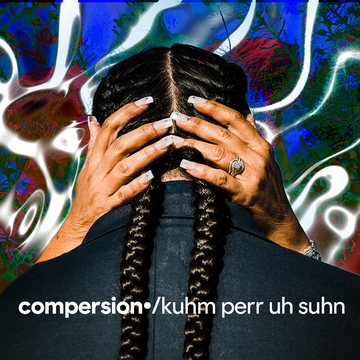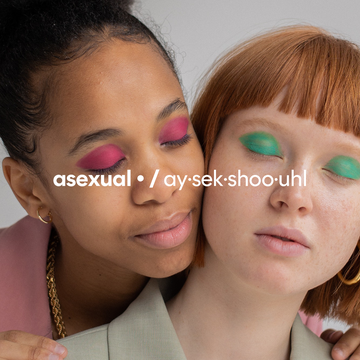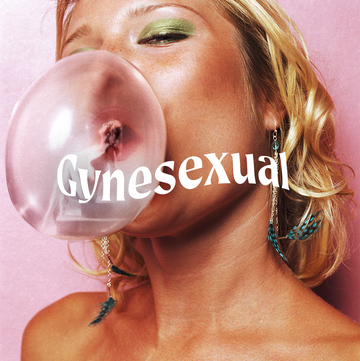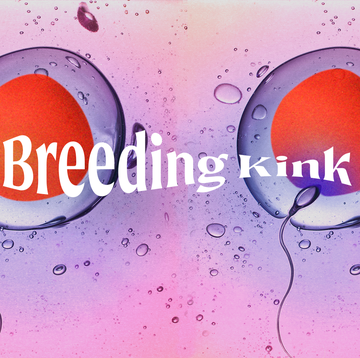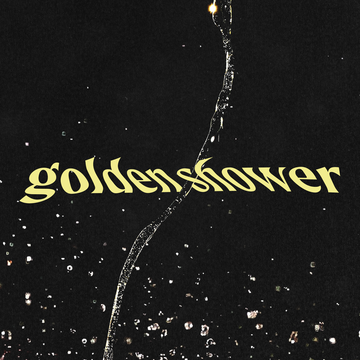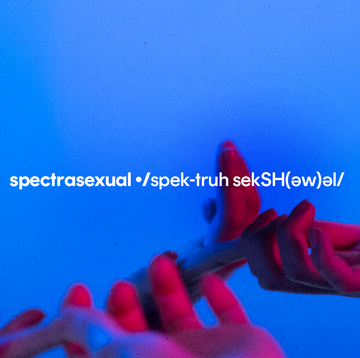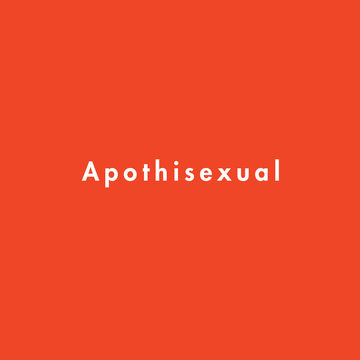One of the best ways you can fully be yourself and embrace your identity is by expressing your gender. And while you might have previously thought you had to be one specific gender, that’s absolutely not true.
In fact, experiencing partial genders or the absence of gender is completely valid. There are plenty of identities out there for people who experience only some of a gender, like the terms demiboy, demigirl, agender, and demigender.
So whether you’re trying to understand gender a lil better or looking to get a grasp on how you’re feeling, you’ve come to the right place. We’ve teamed up with some pros to break down what it means to be demigender, a popular gender identity that might resonate with you or a loved one.
What does it mean to be demigender?
Demigender is a gender identity used to describe those who identify partly with a gender, says psychologist Liz Powell, PsyD, author of Building Open Relationships. The term is used to show how someone experiences gender and the ways in which they do and don’t feel aligned with that gender.
It’s basically an umbrella term for the terms demiboy, demigirl, and demiandrogyne. And as a reminder, demiboy can be used to describe someone who embraces aspects of masculinity—as in, it doesn’t matter whether they were born with X or Y chromosomes. Whereas on the flip side, someone who is a demigirl embraces aspects of femininity.
You can be demigender without being a demiboy or demigirl, but you can’t be a demiboy and not be demigender as well.
The difference between demigender, bigender, pangender, and genderfluid
Dr. Powell says there’s actually a significant amount of overlap in gender identity and LGBTQ+ terms in general, so let’s start with the difference between bigender and demigender.
While it may be similar, the biggest difference is that “folks who are demigender partly embrace one gender but may not with any other gender,” whereas folks who are bigender “tend to be the combination of two genders,” explains Dr. Powell.
Demigender also differs from pangender in the sense that someone who’s pangender may be many or all of the genders simultaneously. (Again, different than demigender because demigender people may partly embrace one gender but not others.)
Genderfluid is another common gender-related term, which also differs from demigender. Someone who’s genderfluid moves between different genders, which is different than demigender. But as you can see, there aren’t just two simple choices when it comes to gender—there are so many options to help you feel seen.
It’s also important to note that demigender, as well as terms like agender, genderqueer, and bigender, is a gender identity, not a sexual identity like demisexual. So demigender simply describes someone’s personal gender and not who they are or aren’t attracted to.
What does demigender look like?
Because gender is a social construct, there’s literally no right or wrong way to express your demigenderness. “It’s very individual,” explains Dr. Powell. “Some people experience it as a loose connection to one gender, while others may experience it as a stronger connection to one gender than any others.”
That said, because someone who’s demigender might lean more masculine or more feminine in attitudes or clothing, they might gravitate toward a specific style or they could stick with more gender-neutral fashion choices.
It’s also important to note that there is no set pronoun for someone who is demigender, so always ask for pronouns (and always offer your own)—never assume someone’s pronouns.
Signs you might be demigender
The biggest sign that you might be demigender is simply if it’s something you question often. “In general, folks who are cisgender don’t tend to spend a lot of time thinking about how great it would be to be another gender or about how little they identify with how people describe their gender,” says Dr. Powell. “So if you are wishing or thinking about that, it could behoove you to give yourself space to explore your gender.”
And since there’s no set of rules or checklist that can determine your gender identity, it’s up to you to figure out what gender identity resonates well.
Here are a few things you can consider, though, that could indicate you’re demigender:
- You find yourself feeling some alignment with a gender but also feeling like there are times when you don’t.
- There are some aspects of a gender you do identify with and others you don’t.
- You’ve experienced gender dysphoria, which is the sense that there’s a mismatch between your gender identity and biological sex or outward appearance/actions.
If you’re still scratching your head, Dr. Powell suggests checking out a book called You and Your Gender Identity: A Guide to Discover, by Dara Hoffman-Fox, which can walk you through the whole process of gender exploration.
How to be a proud demigender person
Just like there’s no right or wrong way to look as a demigender person, there’s no right or wrong way to be proud either! It all comes down to simply doing what feels best for you.
Consider rocking a demiboy or demigirl flag, both of which are composed of vertical gradient gray lines with two blue center lines for the demiboy version and pink lines for the demigirl one.
Additionally, Dr. Powell says joining communities of people who share your gender identity and can understand how you feel is major. Hashtags like #Demigender, #DemigenderPride, and #Demigenders on social media are a great place to start.
That said, you should never feel pressured to be out if you don’t want to be. “Being out is a very personal choice and isn’t always safe for everyone,” explains Dr. Powell. “If there are people in your life who you think will be supportive and affirming, you can come out to them about your gender” when and if you feel comfortable.
And if you’re ready to celebrate, whether privately or publicly, Demigirl Pride Day is observed on June 21 and Demiboy Pride Day is on June 22.
How to support friends or partners who are demigender
As with anyone, the most important thing you can do is respect and support others, says Julia Davis, a mental health expert with Giejo magazine. You can do this by affirming the gender identity of everyone, no matter what they look like or how they present.
You never want to make assumptions about someone’s gender identity, sexual orientation, or pronouns. “Every person is different around this, so don’t assume you know what they will want,” says Dr. Powell.
And if you misgender someone, simply apologize, repeat the phrase using the correct pronoun, make a note to use it in the future, and move on. Making a big deal out of it only puts the demigender person in the position of having to act like it’s NBD.
Additionally, if you’re cisgender, start by introducing yourself with pronouns to make it more accessible for others, and take the initiative to self-educate. It’s never an LGBTQ+ or demigender person’s responsibility to explain their lifestyle or gender to you. Take the time to learn so that if you do have questions, you can come to the conversation prepared and well informed.
Rachel Varina is a full-time freelance writer covering everything from the best vibrators (the Lelo Sona) to the best TV shows (The Vampire Diaries). She has over 10 years of editorial experience with bylines at Women's Health, Elite Daily, Betches, and more. She lives in Tampa, Florida, but did not feed her husband to tigers. When she's not testing out new sex toys (100+ and counting so far!), she's likely chilling with her dogs or eating buffalo chicken dip. Ideally at the same time. Follow her on Instagram and Twitter.





